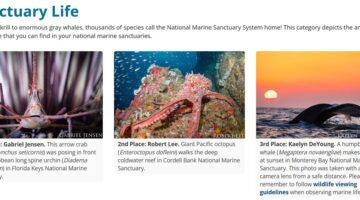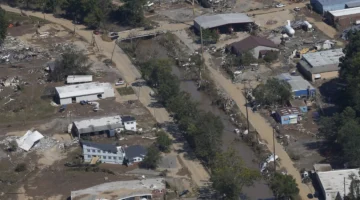County gets serious about adapting to climate change
BY TERRY SCHMIDA
Florida Gov. Rick Scott may not like the terms “climate change” or “global warming,” but that hasn’t stopped Monroe County politicians from tackling the issues underlying the contested language.
Once again, at the Board of County Commissioners’ April 15 meeting in Key West, representatives and unelected officials alike made it clear that they’re not waiting for the polarizing politico to undergo a Damascene conversion before they take serious steps to deal with the sea-level rise headed toward the Keys like a slow-moving hurricane.
Parts of Stock Island could be seriously impacted by rising waters, County Mayor Danny Kolhage warned at the meeting, as he demanded concrete action, such as updating the comprehensive land plan, rather than “empty statements.”
Kolhage got his wish, as the commission ordered staffers to get busy incorporating the county’s climate change and energy efficiency plans into the 2015-16 fiscal year budget, which comes into effect Oct. 1. Among the initiatives are building codes allowing contractors to build higher, flood-resistant structures, and the hiring of consultants to facilitate long-term solutions to the anticipated effects of the changing environment.
“Raising the height limit is something we’re going to need to look at,” District 3 Commissioner Heather Carruthers said earlier this month. “If we plan to continue to live here in the Keys, in the face of sea level rise, we’re going to have to make adjustments to allow people to take reasonable measures to protect their homes. It’s the right thing to do.”
A progress report from County Administrator Roman Gastesi stressed preemptive actions already being undertaken, such as the building of the new Stock Island fire station higher off the ground than its older equivalents.
Wall Street has even become a factor, according to Gastesi, who has received inquiries from brokers who assess the county’s bond ratings and are curious to see what Monroe’s future prospects look like, from a climate-concerned perspective. Not surprisingly, various studies have portrayed the Keys as particularly vulnerable to sea-level rise, due to the low-lying nature of most of the jurisdiction.
Island development nixed
Also at the recent BOCC meeting commissioners passed a moratorium on the controversial development of offshore islands such as Wisteria or “Christmas Tree Island”, located just outside of Key West Harbor.
The moratorium will stay in place until it can be determined whether or not tougher development rules for such islands should be made permanent. The county has been touting the idea of refusing to allow the transfer of Rate of Growth Ordinance (“ROGO”) units from the main islands of the Keys to an “area of land, surrounded by water, which is not directly or indirectly connected to U.S. 1 by bridge, road or causeway,” according to County Planning Director Mayte Santamaria.
Long-term development restrictions could affect a number of well-known area islands, such as Ballast Key, Little Palm Island, and Tarpon Belly Key.
[livemarket market_name="KONK Life LiveMarket" limit=3 category=“” show_signup=0 show_more=0]





No Comment